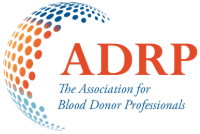What would it take to convince you to donate? A survey study of the relationship between motivators, barriers, and payment for whole blood, plasma, and platelet donation
Authors
Christopher R. France, Janis L. France, Lina K. Himawan
Abstract
Background
With growing discussion about blood donor remuneration, the present study examined the level of payment that may be required to convince individuals to engage in whole blood, plasma, and platelet donations.
Study Design and Methods
Anonymous online surveys were completed by a college sample [n = 490; 76.9% female; Mean Age = 20.3 (SD = 4.9) years; 32.9% whole blood donors] and a ResearchMatch sample [n = 323; 70.6% female; Mean Age = 50.7 (SD = 16.6) years; 82.7% whole blood donors]. Level of payment needed to motivate whole blood, plasma, and platelet donation was examined as a function of donation history, sample, and gender. In addition, path analyses examined associations between donation motivators, barriers, and payment level.
Results
Across all types of donation, history of whole blood donation was related to a greater willingness to donate without payment. At the same time, however, sizeable portions of prior donors indicated that monetary payment would convince them to donate whole blood (24%), plasma (51%), or platelets (57%). Across all types of donation, donation-related barriers (i.e., anxiety, fear) were indirectly related to higher payment levels via lower self-efficacy and more negative donation attitudes. Donation-related motivators (i.e., warm glow, regret, and altruism) were indirectly related to lower payment levels via higher self-efficacy and more positive donation attitudes.
Conclusion
Despite reporting a strong commitment to nonremunerated blood donation, many respondents with and without a history of blood donation indicated that money would convince them to engage in whole blood, plasma, and platelet donation.
March 30, 2022
Related Resources
Engaging blood donors as advocates Social media preferences and associations with marketing
Background: Various critical medical procedures would become impossible without blood donations—saving lives in emergencies, surgeries, and chronic conditions like thalassemia. Therefore, it seems crucial to enhance donor recruitment and ensure…
Rethinking the role of older donors in a sustainable blood supply
INTRODUCTION Many countries, particularly high human development index countries, are facing the challenge of an aging population.1 For Blood Collection Agencies (BCAs) in these countries, an aging population poses two…


